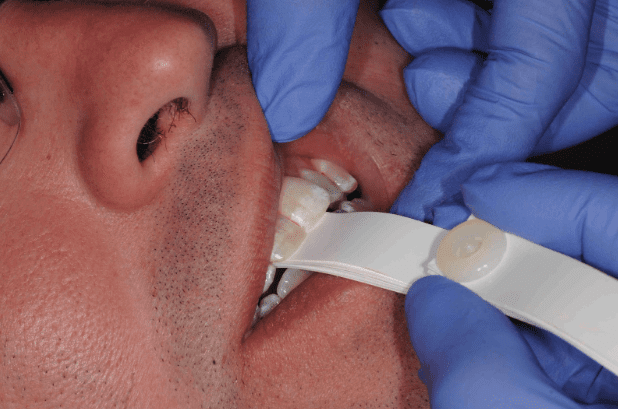By: Lee Ann Brady DMD
Topic Originally Appeared on PankeyGram.org
It can be an incredibly frustrating clinical situation when you have been meticulous about preparing a posterior tooth, (most commonly a molar) for a crown and things aren’t predictable.
Using your burs you created depth cuts to ensure adequate occlusal clearance. After the impression you allow your assistant to fabricate the temporary only to have them come get you.
Why? Because the temp is thin or perforated on the occlusal. When you go back to check, and have the patient bite, sure enough, the opposing tooth is touching your prep.

Common Reason Your Occlusal Clearance Disappears
A common reason that this happens is because we just prepared away the patient’s first point of contact in centric relation.
The lateral pterygoid muscle in coordination with the elevator muscles has a learned pattern of firing that brings the mandibular teeth into maximum intercuspal position.
This “learned” position is programmed by the patient’s first point of contact when the condyles are seated.
For some patients when we remove this contact, and therefore the message that was programming the muscles to locate MIP, they release quickly.
When the muscles release and the condyles seat, the occlusion is now totally different than MIP was moments before.
Identifying Patients at Risk
One solution that I considered briefly was to no longer work on molars! Alas, not a great business strategy.
Removing this frustration is about understanding which patients are at risk. Identifying risk begins with the exam, whether we are discussing caries or occlusion.
There are several key factors that alert me to this potential issue.
I start by identifying the patient’s first point of contact and clarifying if it is on the tooth we are about to prepare.
If I am going to prepare FPC away, then I look at the magnitude and direction of the patient’s slide or the difference between this position and MIP.
If the difference is small (1-2mm), then even if their condyle does seat the occlusal difference will not cause an issue for clearance. So large slides (3mm or greater) could cost approximately 1mm of clearance on the prepared tooth.
Other factors include whether they have a history of occlusal changes or more than one MIP they can find.
In Conclusion
Understanding the risk still leaves us with the question of how to proceed. That is a longer conversation for another post.
However, if we proceed as we would before, at least knowing the risk we can explain this to the patient ahead of time, and help them understand how we would manage it if it happens.
Learn More:


